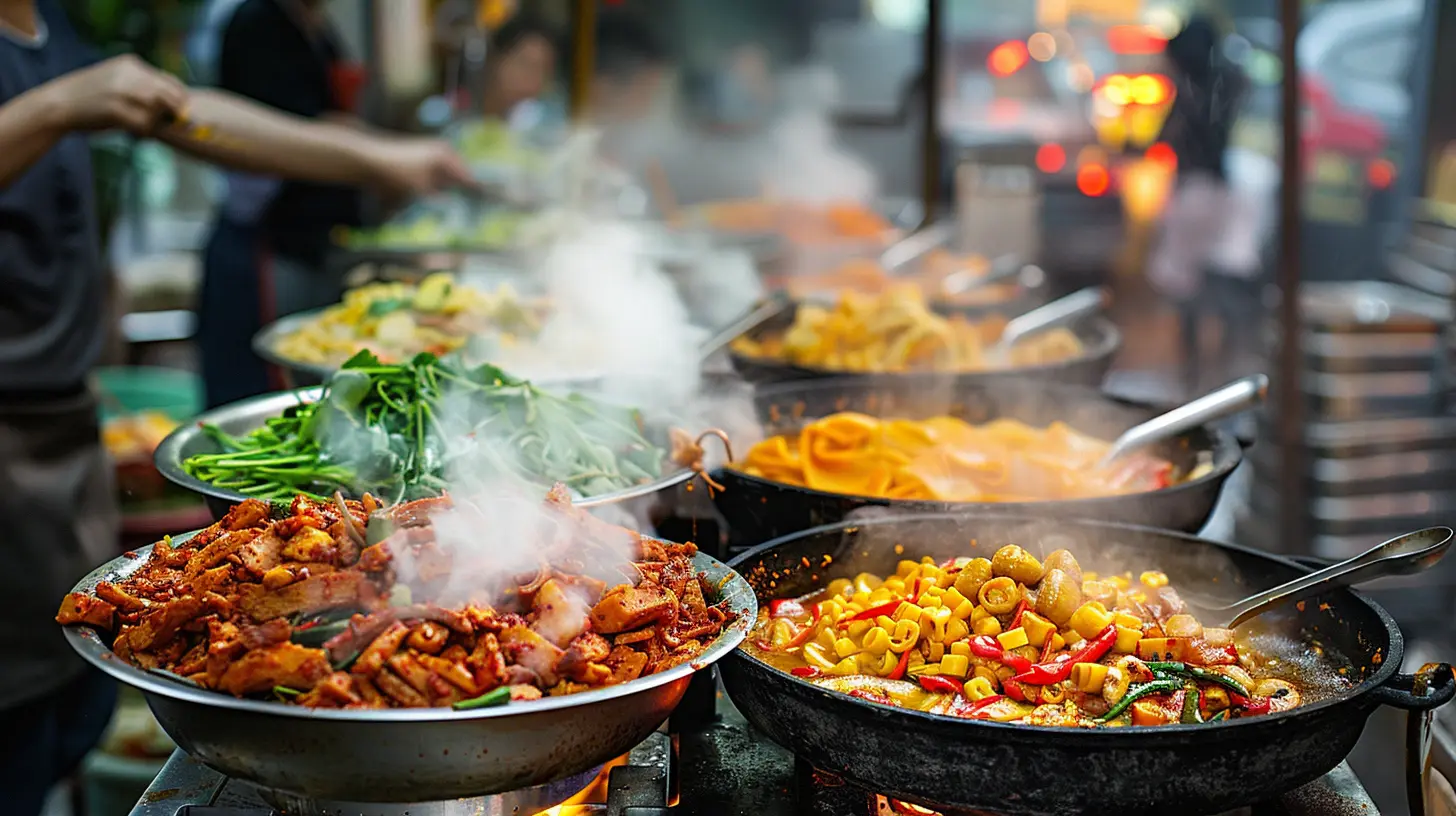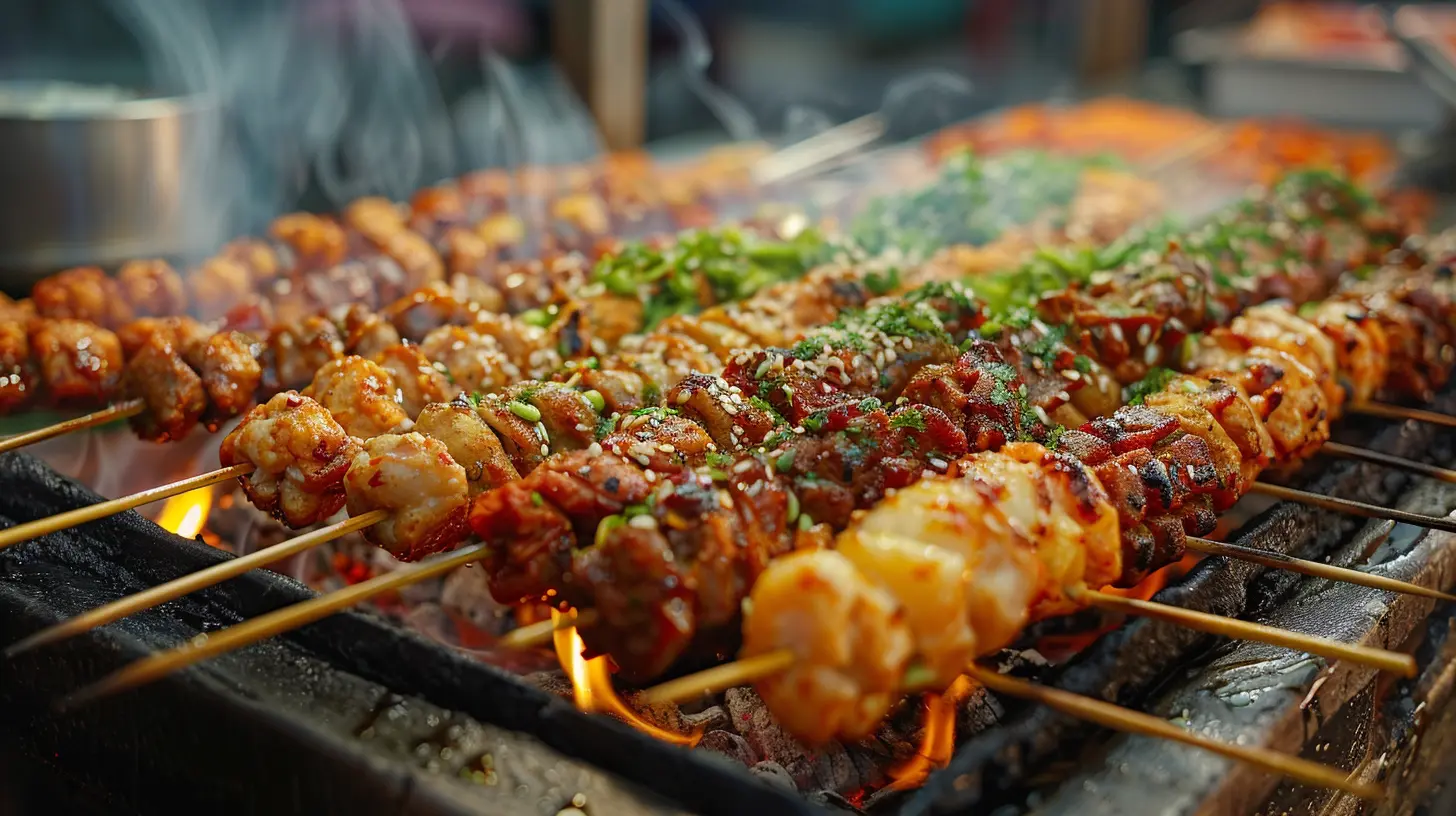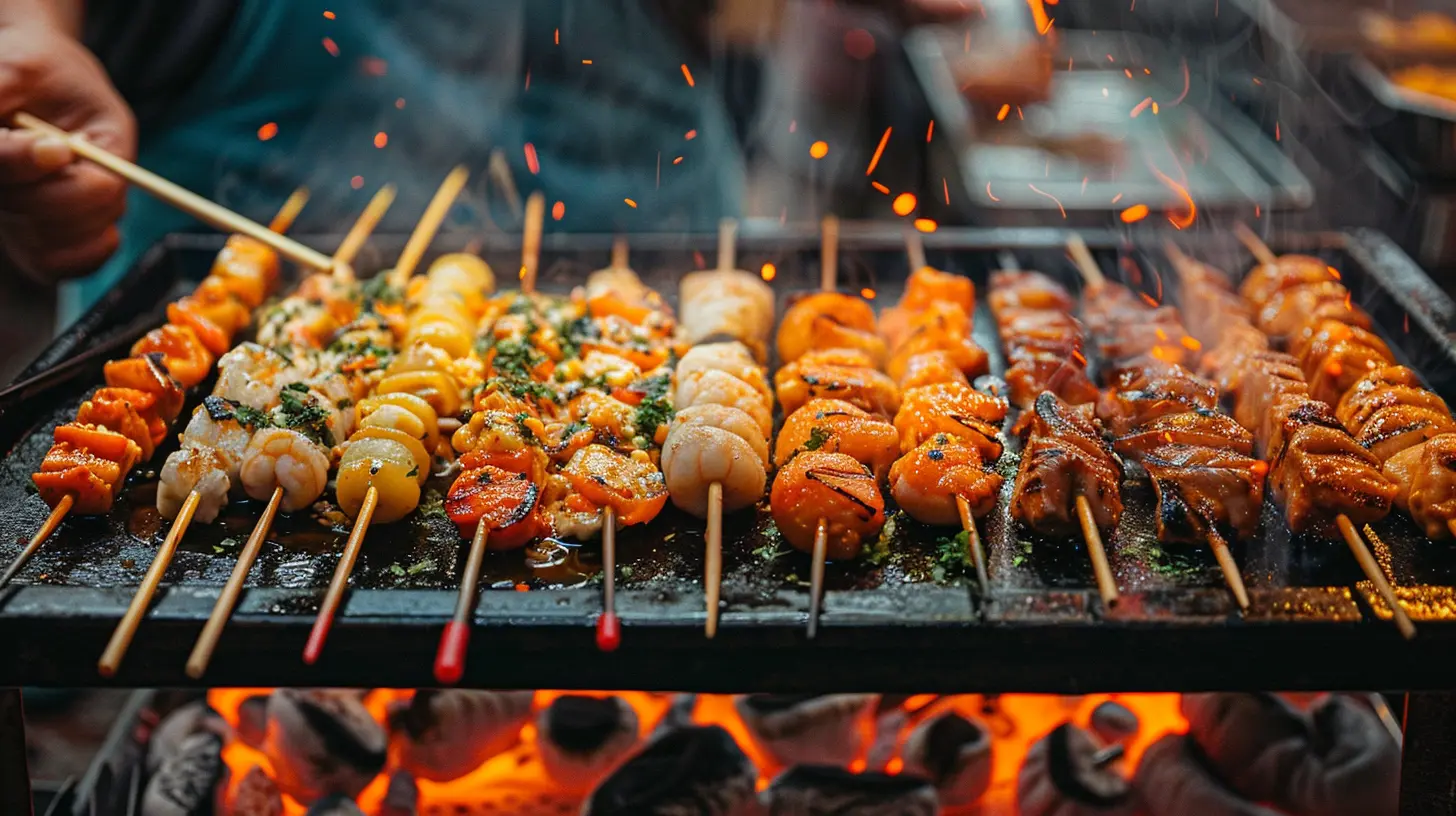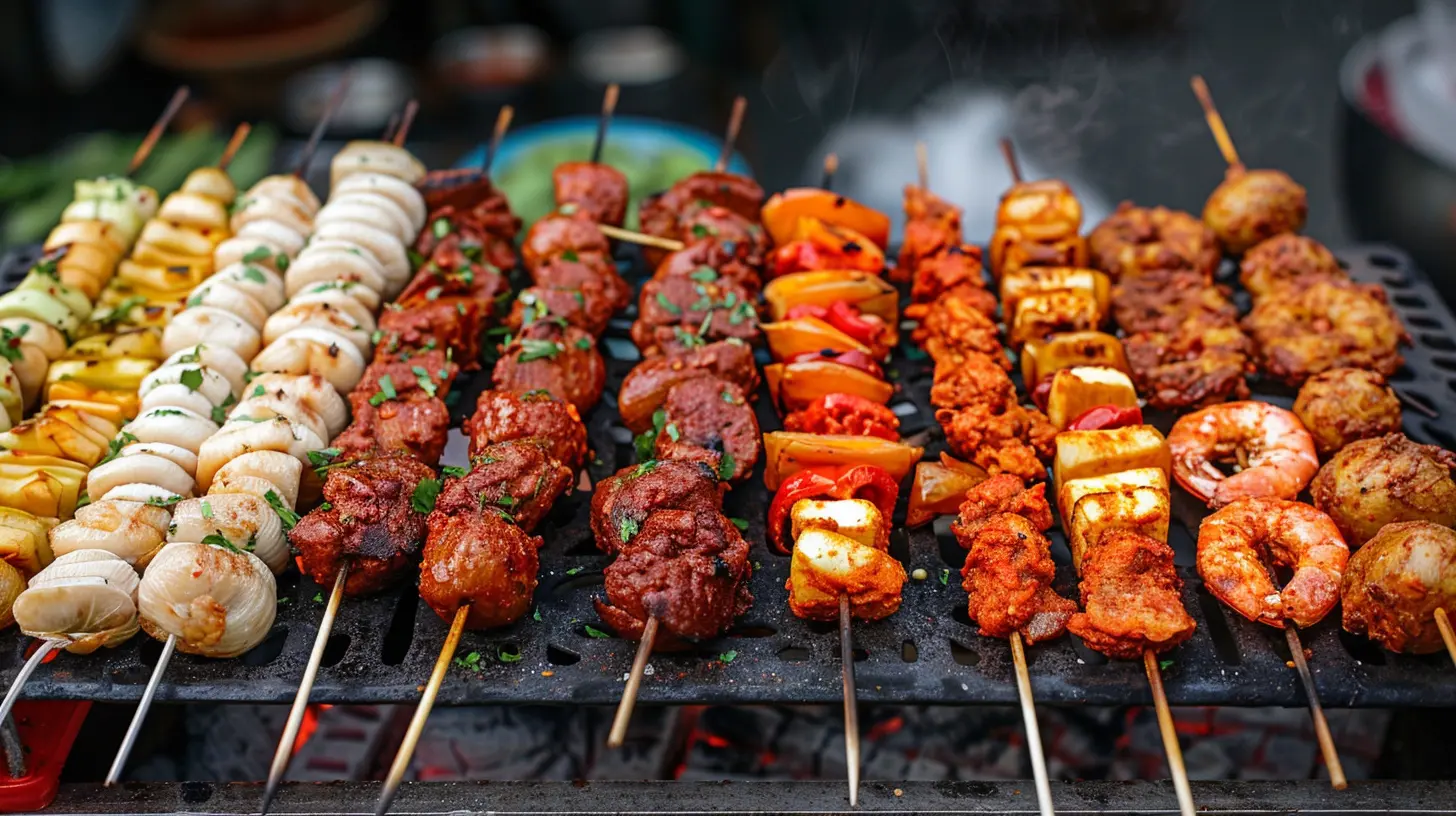The Influence of Street Food on Modern Cuisine
7 June 2025
Street food—it's more than just a quick bite on the go. It's an experience, a culture, and an integral part of culinary evolution. Have you ever wondered how those humble roadside snacks have shaped what we eat in high-end restaurants today?
From food trucks to Michelin-starred menus, street food has left a lasting mark on modern cuisine. Let’s dive into the delicious world of street eats and see how they’ve transformed the way we cook, eat, and think about food. 
The Global Impact of Street Food
You don’t need to travel far to see the influence of street food—it's everywhere. Whether it’s a taco truck in Los Angeles, a noodle stall in Bangkok, or a kebab stand in Istanbul, street food has a way of capturing the essence of a culture in a single bite.But it’s much more than just local flavors. Street food has crossed borders, inspiring chefs worldwide to reinvent traditional dishes in creative and exciting ways.
A Melting Pot of Flavors
One of the most beautiful aspects of street food is its diversity. It’s a reflection of history, migration, and cultural fusion. Many of the meals we now consider global staples started as humble street-side snacks:- Tacos – Originating from Mexican street vendors, these have now been transformed into gourmet creations in restaurants worldwide.
- Ramen – Once a Japanese working-class meal, it’s now an international sensation with high-end variations.
- Banh Mi – This Vietnamese sandwich blends French and Asian influences, proving how colonial history shapes food.
Street food is, in many ways, a culinary melting pot, bringing together flavors that tell stories of trade, travel, and tradition. 
Street Food’s Role in Culinary Innovation
Street food isn’t just about tradition—it’s also a hotbed for innovation. Modern chefs often look to street vendors for inspiration, incorporating bold and unexpected flavors into fine dining.Fusion Cuisine: A Street Food Gift to the World
Fusion cuisine wouldn’t be where it is today without street food. Think about Korean BBQ tacos or sushi burritos—these creative mashups began as street food experiments before making their way into restaurants.Street vendors are constantly experimenting with flavors, combining ingredients in new ways that challenge conventional cooking. And today’s chefs? They're taking notes.
Street Food Goes Gourmet
Some of the most famous chefs in the world started with street food influences. Michelin-starred restaurants often serve elevated versions of traditional street dishes:- David Chang's Momofuku – He took inspiration from ramen stalls and made it a fine-dining experience.
- Roy Choi's Kogi Truck – His Korean-Mexican fusion started on the streets and became a revolution in food culture.
- Gaggan Anand’s Fine Dining Indian Cuisine – Inspired by Indian street snacks like chaats, Anand turned them into high-end tasting menus.
There’s something magical about taking a dish born from necessity and turning it into an art form. 
The Social and Economic Role of Street Food
Street food isn’t just about taste—it plays a huge role in society and the economy.A Lifeline for Small Vendors
For many, selling street food is a means of survival. In cities across the world, vendors create affordable meals while sustaining their families and communities. It’s the essence of entrepreneurship—low investment, high creativity.Bringing Communities Together
Street food is social. It creates gathering spaces, where strangers bond over a shared love for good food. Whether it’s night markets in Taiwan or falafel stalls in the Middle East, these food hubs bring people together in a way that restaurants often can’t.Boosting Tourism
Let’s be honest—half the reason we travel is for the food. Food tourism has exploded in recent years, with travelers seeking out authentic experiences through street food tours. Just look at how popular Anthony Bourdain’s food adventures were—street food became the highlight of travel, not just an afterthought.
Street Food's Influence on Home Cooking
Not only has street food reshaped restaurant menus, but it’s also transformed home kitchens.Affordable, Easy, and Delicious
Street food is often made with simple ingredients, yet it delivers bold flavors. This has encouraged home cooks to experiment with street-style cooking, relying on spices, marinades, and grilling techniques to create dynamic meals without expensive ingredients.DIY Street Food Trends
With the rise of food blogs and YouTube cooking channels, street food recipes have never been more accessible. People are recreating their favorite street foods at home, from homemade tacos to Thai-style skewers.Restaurants may refine these dishes, but at home, we keep the heart and soul of street food alive.
Sustainability and the Future of Street Food
With the world shifting towards eco-conscious dining, street food is adapting. Many street vendors are now focusing on sustainable practices, from using biodegradable packaging to sourcing local ingredients.Farm-to-Street Movement
Farm-to-table has been a buzzword in fine dining for years, but now we’re seeing a farm-to-street movement. Vendors are using fresh, locally-sourced ingredients to create high-quality street eats. The result? Better food, support for local farmers, and a more sustainable food industry.Healthier Options
Street food has long had a reputation for being indulgent, but that’s changing. Many vendors are now offering healthier choices, substituting fried options with grilled alternatives and using fresh produce.The future of street food isn’t just delicious—it’s also smarter and more sustainable.
Final Thoughts: Street Food’s Legacy
Street food has done more than just influence modern cuisine—it has shaped the way we experience food. It’s proof that great-tasting meals don’t need fancy ingredients or high-end kitchens.From the bustling food stalls of Southeast Asia to gourmet versions in high-class restaurants, street food continues to inspire, innovate, and connect us. Whether you’re grabbing a quick snack or savoring a reimagined version of an old favorite, remember—you’re tasting history, culture, and a little bit of magic in every bite.
So, next time you pass by a food cart or street stall, stop for a moment. That bite might just be the future of food.
all images in this post were generated using AI tools
Category:
Street FoodAuthor:

Reed McFadden
Discussion
rate this article
3 comments
Clarissa McLanahan
Street food is more than just a meal; it’s a vibrant expression of culture and community. Embracing these culinary delights enriches our palate and connects us to the heart of each destination. Dive in, savor the flavors, and let every bite inspire your journey!
June 21, 2025 at 4:06 AM

Reed McFadden
Absolutely! Street food truly captures the essence of culture, offering a delicious gateway to understanding local traditions and flavors.
Annabelle McIlroy
Street food is like a culinary adventure in every bite! It’s the passport to exploring cultures without leaving your seat. From sizzling tacos to fragrant curries, street food has truly spiced up modern cuisine—who knew happiness could be so deliciously portable? 🍴✨
June 15, 2025 at 3:26 AM

Reed McFadden
Absolutely! Street food's vibrant flavors and cultural diversity make it a unique gateway to global culinary traditions. It's amazing how a simple dish can tell such rich stories! 🍽️
Eva Jackson
Street food blends tradition and innovation, reflecting local cultures while influencing modern cuisine. It embodies a sense of community and authenticity, making every bite a unique experience.
June 7, 2025 at 4:28 AM

Reed McFadden
Thank you for your insightful comment! Street food indeed beautifully captures the essence of cultural heritage while continuously shaping contemporary culinary trends.


